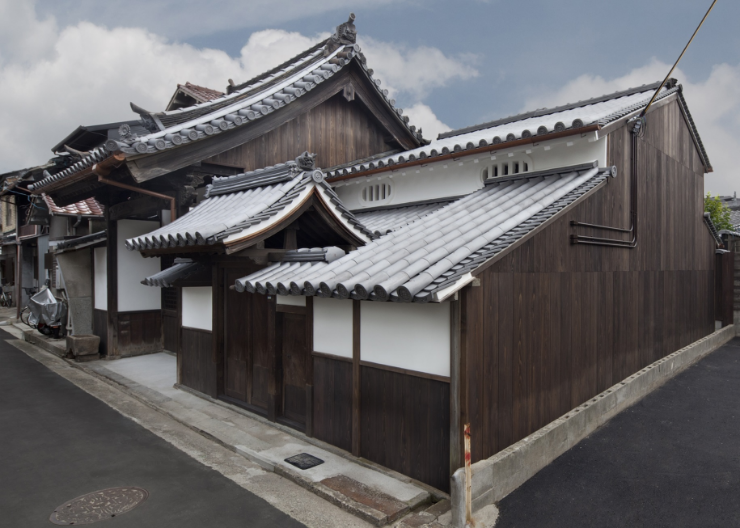Architecture
 Seigakuin’s exterior
Seigakuin’s exterior
Architecture of Seigakuin
The Old Seigakuin Mountain Priest Dojo was an Edo-period (17th to 19th century) Shugendo* dojo and center for town Shugen worship.*Shugendo: ancient Japanese mountain worship based mystic practices
A document written in the late Edo-period (19th century) suggests that the Seigakuin was in this location as early as 1573, but the specific circumstances of its founding are unknown.
However, in the Sakai O-ezu (Great Atlas of Sakai) of 1689, the current location is marked as Yamabushi Seigakuin (Mountain Priest Seigakuin), indicating that Shugendo adherents were engaged in activities at this location by the late 17th century.
The present building dates to the late Edo period and includes a gate, an earthen-floored area, drawing rooms, and a Acala hall for Fudo worship.
The Acala hall (fudo-do) features a seated statue of Fudo Myoo, the principal deity, and statues of Kobo Daishi, Shomen Kongo, and En no Gyoja, all of which date to the Edo period, allowing visitors to experience the atmosphere of a Shugendo dojo.